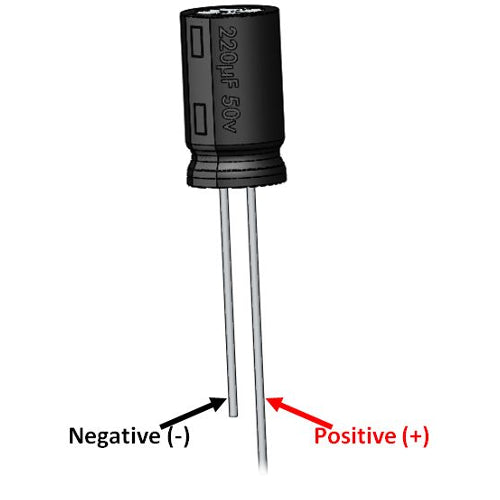1uF 63V Electrolytic Capacitor


Voltage Rating (63V): The voltage rating is 63 volts. This represents the maximum voltage that the capacitor can handle without the risk of breaking down or failing. It's crucial to operate the capacitor within or below this voltage limit to ensure proper functionality and prevent damage.
Electrolytic Type: The "electrolytic" nature of the capacitor refers to its construction, which typically involves an electrolyte solution. Electrolytic capacitors are known for their relatively high capacitance values compared to other types of capacitors, making them suitable for applications where larger amounts of charge storage are required.
Polarity: Electrolytic capacitors are polarized components, meaning they have a positive and a negative lead. It's essential to connect them in the correct orientation in a circuit to prevent damage. The negative lead is usually marked on the capacitor body, and the positive lead is typically longer.
1uF 63V Electrolytic Capacitor
Available:In Stock
- Product SKU: CAPAC003
₹ 3
₹ 10
Need Volume Discounts? Deals are specially designed for you. Click here
Need Customization? Provide us more details Click here
🏠
Warehouse Details:


Specification
Description
A 1uF/63V electrolytic capacitor is a type of electronic component with specific electrical characteristics.Here's a More Detailed Description of its Specifications:
Capacitance (1uF): The capacitance of the capacitor is 1 microfarad (uF). This value indicates the capacitor's ability to store electrical charge. In practical terms, a higher capacitance value means the capacitor can store more charge.Voltage Rating (63V): The voltage rating is 63 volts. This represents the maximum voltage that the capacitor can handle without the risk of breaking down or failing. It's crucial to operate the capacitor within or below this voltage limit to ensure proper functionality and prevent damage.
Electrolytic Type: The "electrolytic" nature of the capacitor refers to its construction, which typically involves an electrolyte solution. Electrolytic capacitors are known for their relatively high capacitance values compared to other types of capacitors, making them suitable for applications where larger amounts of charge storage are required.
Polarity: Electrolytic capacitors are polarized components, meaning they have a positive and a negative lead. It's essential to connect them in the correct orientation in a circuit to prevent damage. The negative lead is usually marked on the capacitor body, and the positive lead is typically longer.
Common Applications:
Electrolytic capacitors, including those with a 1uF/63V rating, are commonly used in electronic circuits for various applications. They are often employed in power supply filtering, coupling, and energy storage circuits where their higher capacitance values are advantageous.Features of Electrolytic Capacitors
- Aluminum electrolytic capacitors are polarized, meaning they have a positive and a negative lead.
- The electrolyte used in aluminum electrolytic capacitors is typically a liquid or gel containing a conducting salt.
- Aluminum electrolytic capacitors have a specified voltage rating, indicating the maximum voltage they can handle without breaking down.
- The performance of aluminum electrolytic capacitors can be affected by temperature changes.
- Aluminum electrolytic capacitors exhibit a small amount of resistance known as equivalent series resistance (ESR).
- Aluminum electrolytic capacitors come in various sizes and form factors.
- Aluminum electrolytic capacitors may exhibit a small amount of leakage current.
- This is a radial capacitor.
Applications of Electrolytic Capacitor
- Power Supplies
- Audio Equipment
- Electronic Ballasts
- Motor Starters
- Frequency Filtering
- Voltage Regulators
- DC-DC Converters
- Automotive Electronics
- Switching Power Supplies
- Industrial Equipment
Technical Details
- Structure: Fixed Capacitor
- Type: Aluminum Electrolytic Capacitor radial type
- Material: Plastic+Metal
- Capacitance Value range: 1uF
- Voltage: 63V
- Mounting Type: Through Hole
- Operating Temperature (°C): -40 to 105
- Tolerance on Capacitance: ± 20 %
Pinout Diagram

Integration with Arduino


























